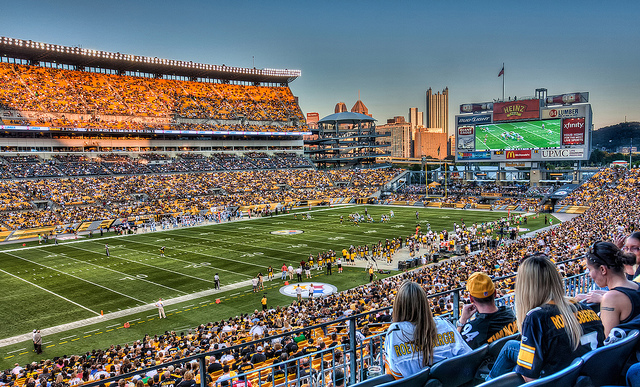
Yale Law Professor explores the rulemaking power wielded by associations like the National Football League.
Today, fans across the United States prepare for the Super Bowl 51 showdown between the New England Patriots and the Atlanta Falcons, marking the end of the 2016 National Football League (NFL) season. In addition to tracking traditional metrics like yards rushed and touchdowns completed over the past six months, sports journalists and team officials have also followed another statistic: concussion rates among NFL players. Before 2016 regular season play kicked off, the League announced a new policy to strengthen enforcement of its concussion safety protocol.
But why does the NFL control concussion protocol in the first place? Is it the best authority to do so? In a recent paper, Robert Ellickson, a professor at Yale Law School, explores how and why private membership associations—from the NFL to condominium boards—set and enforce rules for their members, and how such associations’ private rules interact with the public legal system.
Although it may seem obvious that the NFL would take charge of crafting and enforcing concussion rules, other authorities could play the role of rule-maker. Sean Braswell, a journalist with the online magazine OZY, recently argued that football should be regulated more like tobacco. Cigarette packages include graphic health warnings from the Surgeon General; Braswell suggested government regulators should similarly caution football players about the sport’s risk of brain injury.
However, according to Ellickson, private membership associations often undertake law-like responsibilities when they are the best and least expensive fit for the job.
Ellickson points out benefits members enjoy when an association—rather than a government entity—assumes responsibility for resolving disputes and issuing punishments. A principal advantage revolves around expertise. Members may agree to grant the association governance authority to achieve informed and swift resolutions to disputes because the association employs or has access to those most knowledgeable about the sport or activity. If the issue involves complicated facts, and if members would collectively benefit from a quick decision, the association is often best positioned to arbitrate, writes Ellickson.
As an example, Ellickson cites disciplinary actions carried out by FIFA, the international soccer association. When a Uruguayan player, Eduardo Suarez, infamously bit an opponent during a 2014 World Cup match, FIFA disciplined Suarez “within two days” of the incident; a court decision would have taken much longer, Ellickson notes. FIFA’s punishment of Suarez also dissuaded other players from retaliating against him or his teammates during subsequent games, which could have triggered an “unending feud” and more player injuries, Ellickson explains.
Turning back to American football, Ellickson also explores what motivated the NFL to introduce its own punishments for players who commit acts of domestic violence. Unlike helmet-to-helmet contact rules, the NFL has no “special expertise in rulemaking or adjudication” concerning domestic violence, Ellickson acknowledges.
Some commentators view the NFL’s involvement on this issue as a face-saving publicity stunt. For instance, NFL Chairman Roger Goodell only lengthened one player’s suspension after video footage of the assault became public. However, Ellickson suggests the league may have stepped in to help fill a gap in the legal system, considering how few domestic violence claims are reported and prosecuted. Ellickson lists several barriers to effective prosecution of domestic violence such as fear of reprisal and other strong motivations to settle out of court. NFL-issued consequences to players for acts of domestic abuse may deter the criminal behavior in a way the legal system currently does not.
Private associations also occasionally respond to formal legal decisions by issuing additional penalties of their own. Ellickson offers another example from football: In 2007, a federal judge sentenced Michael Vick, then quarterback for the Atlanta Falcons, to 23 months in prison for his involvement in a dog-fighting venture. Shortly thereafter, the NFL decried Vick’s violations of the league’s rules and issued him an indefinite suspension.
Private associations, even those like FIFA or the NFL, that wield broad rulemaking and enforcement authority do not operate completely outside of the law, Ellickson clarifies. He explains that each association must select its legal organizational form, such as a non-profit or a limited liability company, and abide by the legal duties associated with that structure. The NFL, for example, operated as a non-profit—and therefore tax-exempt—organization until last year. After changing its corporate structure, the league must now pay taxes. On the other hand, under its new organizational form, the NFL faces fewer legal obligations to share information, including employee salaries, with the public. Ellickson writes that private associations and public law influence one another: private membership associations do face limits from lawmakers and regulators, yet judges also commonly defer to an association’s internal arbitration outcome.
Ellickson’s paper was published in the American Law and Economics Review in September.
The image of Heinz Field is the property of the Matthew Paulson and is used under a Creative Commons License.



